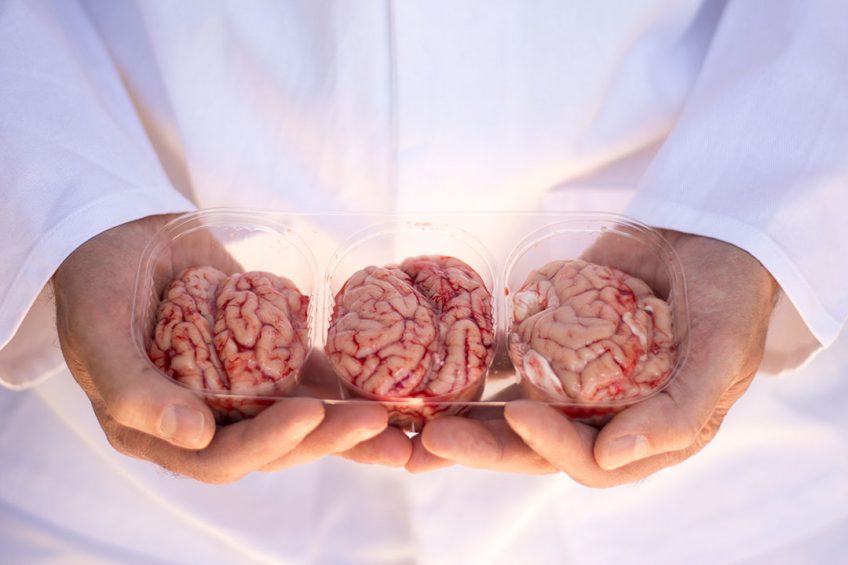Pig brains partly revived after 4 hours

The brain of a dead pig can be partially revived a few hours after the animal has died. That has been a remarkable outcome of a research at several US academic institutions.
Some of the pig brain’s structural and functional cell functions could be restarted, the scientists found, when a fluid rich in oxygen was circulated through the organ. In order to do so, the researchers used the brains of 32 pigs and a system called BrainEx, pumping ‘blood’ with oxygen through the brains.
At an earlier stage, the team around Dr Nenad Sestan at Yale University, USA, had already noticed that removed brain tissue could still show electronic activity hours after death. This made them perform this trial.
Restoration of cellular functions in pig brains
In their report in Nature, the researchers wrote that it is widely known that large mammalian brains – including humans and pigs – are highly vulnerable to interruptions in blood flow and decreases in oxygen levels. The study described the restoration and maintenance of microcirculation and molecular and cellular functions of the intact pig brain under ex vivo normothermic conditions up to 4 hours post-mortem.
The researchers wrote that they had developed “an extracorporeal pulsatile-perfusion system and a haemoglobin-based, acellular, non-coagulative, echogenic, and cytoprotective perfusate that promotes recovery from anoxia, reduces reperfusion injury, prevents oedema, and metabolically supports the energy requirements of the brain.”
They continued to write: “With this system, we observed preservation of cytoarchitecture; attenuation of cell death; and restoration of vascular dilatory and glial inflammatory responses, spontaneous synaptic activity, and active cerebral metabolism in the absence of global electrocorticographic activity.”

Pigs are more often used as models for human research, like e.g. in this trial around Zika virus
Pigs did not regain consciousness
The researchers did add, however, that this did not mean that the animal had regained consciousness or even brain functions to any degree – it just showed that there was cellular activity.
The scientists stated that these findings demonstrate that “under appropriate conditions the isolated, intact large mammalian brain possesses an underappreciated capacity for restoration of microcirculation and molecular and cellular activity after a prolonged post-mortem interval.”
Unlike pig brains that were left alone for 10 hours after death, the organs that had been connected to the BrainEx system for 6 hours had not decomposed, while their cells and neurons were similar or in a better condition than for pig brains analysed 1 hour after death.
The findings by the researchers are sensitive. They raise the possibility that researchers could get better at salvaging a person’s brain even after the heart and lungs have stopped working. This, in turn, could have an effect on the debate on donation of organs.
The research paper was written by Zvonimir Vrselja, Stefano G. Daniele, John Silbereis, Francesca Talpo, Yury M. Morozov, André M.M. Sousa, Brian S. Tanaka, Mario Skarica, Mihovil Pletikos, Navjot Kaur, Zhen W. Zhuang, Zhao Liu, Rafeed Alkawadri, Albert J. Sinusas, Stephen R. Latham, Stephen G. Waxman and Nenad Sestan.











